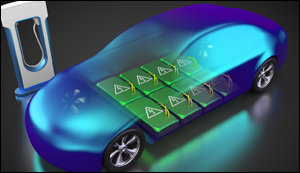New Additives Promise Better Performance for Electric Cars in Cold Weather
28. 6. 2019 | IEEE Spectrum | spectrum.ieee.org
Electric cars struggle with extreme temperatures, which can degrade the electrolyte solutions that conduct ions between the negative electrodes, or anodes, and positive electrodes, or cathodes, within lithium-ion batteries. New additives can help lithium-ion batteries perform over a wider range of temperatures, a potential boon for electric cars, a new study finds.
A key additive to most of these electrolyte solutions is ethylene carbonate, which helps produce a protective layer that prevents further decomposition of electrolyte components when they interact with the anode. However, ethylene carbonate has a high melting point, which limits its performance at low temperatures.

In the new study, researchers from Pacific Northwest National Laboratory in Richland, Washington, tested the effects of five electrolyte additives on the performance of lithium-ion batteries within this temperature range of -40 to 60 degrees C. In the end they identified an optimized combination of three compounds that they added to their previous electrolyte solution. This new mixture caused the formation of highly conductive, uniform and robust protective layers on both the anode and the cathode. At -40 degrees C, batteries containing this blend achieved 67 percent of the discharging performance they saw at room temperature. In comparison, regular lithium-ion batteries only experience about 20 percent discharge capacity.
Read more at IEEE Spectrum
Image Credit: Shutterstock
-jk-




